
Opened 1846 as the Lincoln Terminus of the Midland Railway - the first to reach the city. Re-named 1950 and closed 1985
1 Station St, Lincoln
Besides being an important commercial and industrial centre, Lincoln is one of the country’s great historic cities and a major tourist attraction. Its origins go back two thousand years to the establishment of a Roman fort called Lindum Colonia on high ground overlooking the gap through which the River Witham had carved through Lincoln Heath. Newport Arch the fort's northern gateway can still be seen. In 1086 William the Conqueror built a castle on almost the same site to subdue rebellious locals. Three hundred years later Lincoln had become one of the wealthiest cities in medieval England dominated by a majestic cathedral which is now regarded as one of the finest buildings in Europe. Centuries of stagnation followed the prosperity, but the coming of the railways changed all that.
A railway from Cambridge to Lincoln was suggested as early as 1821, and over the next quarter of a century more than fifty schemes involved the city, most of them dating from the mania years of 1844-5. But there was much talking and very little action until George Hudson lost his battle to block all proposals for a direct London - York line. With characteristic determination, he decided to reach Lincoln first, gain an advantage - and keep it. Work began on extending the Midland Railway from Nottingham in October 1845 and within ten months the 55-mile branch was complete. The official opening of Lincolnshire’s first railway took place on 3rd August I846 with the city in festive mood. One feature of the celebrations seems to have been persistent cannonfire, although one unfortunate soul managed to blow himself up in the process! In the evening Hudson and his guests feasted at the nearby Durham Ox lnn, but the Mayor and Corporation of Lincoln were not invited because of their partiality for the London - York projects. When a public service of five trains each way between Nottingham and Lincoln commenced the following day. Construction of a permanent station adjoining High Street had only just been started and it was several weeks before the impressive terminus began to take shape. The main block was built parallel to the arrival platform and had a long classical facade featuring fluted Ionic columns. It was probably designed by I. A. Davies and was described in the city’s guide of 1848 as ‘a very elegant specimen of Grecian architecture’ according to Britain’s Historic Railway Buildings.
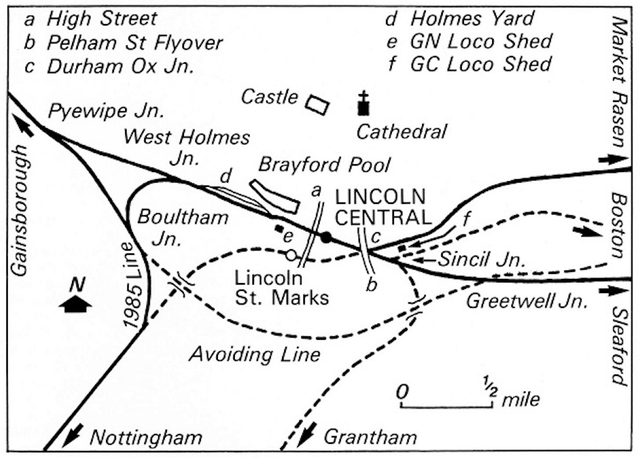
All four tracks were sheltered by twin roofs supported by a row of decorative iron columns and finished off with slatted-timber gable end screens. On 18th December 1848 the Manchester Sheffield & Lincolnshire Railway reached Lincoln and formed an end-on junction with the line from Nottingham, thus creating a through station. Far more significant had been the arrival of the Great Northern Railway in Lincoln two months previously and the completion of its Peterborough - London line on 5th August 1850. Hudson had gone from the scene and in any case the Midland realised that it just could not compete.
So, the Nottingham - Lincoln branch assumed the role of a purely local link, remote from the company’s thrusts towards St. Pancras. Manchester or Scotland. and this minor role continued for well over a century. In September 1950 the suffix 'St. Marks’ appeared on the nameboards to distinguish the station from its former rival down the road.
During the early 1960s St. Marks station still provided Lincoln with a good service to Newark. Nottingham and Derby. In 1961, for example, diesel multiple units departed hourly from 6.10 am to 9.10pm for Derby Midland, the return workings arriving at Lincoln on the hour. At this time the line over High Street crossing saw very few passenger trains, although some of those that did use it were long distance workings - such as the Summer Saturdays Cleethorpes to Sidmouth and Exmouth.
The Beeching report of 1963 nearly put an end to all this for it recommended complete closure of the Nottingham - Lincoln line. However, in 1969 BR decided to abandon the Grantham - Lincoln line instead and send traffic over a new connection at Newark between the former Midland route and the East Coast main line. The future of Lincoln's first railway was secure for the time being, although a dark cloud hung over St. Marks itself in view of the plans to divert trains into Central - the former Great Northern station.
On 5th October 1970 St. Marks enjoyed more than a reprieve: it became by far the more important of the two. All stations locals to Nottingham and the recently introduced Cleethorpes - Newark Northgate semi-fasts continued as before but with the closure of the East Lincolnshire line through Louth and Boston, all Grimsby - London expresses came this way as well. Some effort was made to tidy up the station which had presented a bleak and neglected appearance since the overall roof was removed in 1957. Shortly after these improvements, detailed consideration was even given to the closure of Central. But in view of the passenger services it offered, St. Marks was not really up to standard and must have given many visitors a poor first impression of the city. Central was better in all manner of ways but diverting Nottingham and Newark trains into it was proving difficult. However, by 1982 a solution had been found. It was clear that traffic using the Lincoln avoiding line had declined so much that it could be abandoned and part of the embankment near Boultham Junction removed to make way for the required link. As a result, late on Saturday 11th May I985 St. Marks dealt with its last passengers.
Within hours the signals protecting High Street crossing were removed and a memorial plaque bearing the names of Midland Railway employees who had perished in World War 1 was transferred to Central station three months later. After the track was taken up, archaeologists excavated the Carmelite friary that had occupied the site 700 years previously. Meanwhile, options for preserving the listed but decaying frontage were being explored. Planning permission for a shopping centre was granted in1991, but by mid-I992 the site was still derelict.
It is now a Grade ll listed structure. The façade has been sympathetically retained as part of a retail development using the station frontage as an entrance to the shopping areas. The management company operates from a ‘signal box’ nearby. The land occupied by the sidings, goods yard etc is now occupied by buildings of Lincoln University.
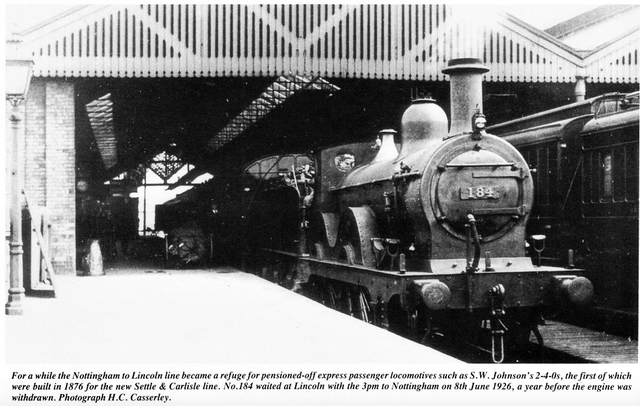
This text is an extract from Railways of Lincolnshire by Paul Anderson - with the permission of the publisher, updated text from Brian Ward.
1902 photo from National Railway Museum
1926 photo from H.C.Casserley
1956 photo from J. Cupit
1972 photo from V.R.Webster
YouTube video Lincoln St.Marks station:
Note: The "Red Wheel" Heritage Plaque was erected in early October 2020 during the Covid 19 pandemic and unveiled formally on Wednesday 15th September 2021 by Toby Dennis, Lord Lieutenant of Lincolnshire; Judy Lady McAlpine, President National Transport Trust;
Mr Stuart Wilkinson Chairman NTT; Councillor Jackie Kirk ,Right Worshipful the Mayor of Lincoln
Mr Michael Williams Mayor’s Consort.
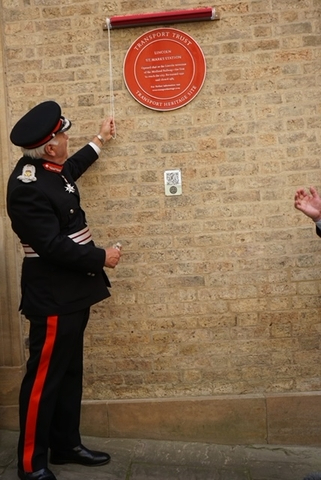

A QR code was recently added below the Red Wheel Plaque. This provides a direct link to this entry on the website.
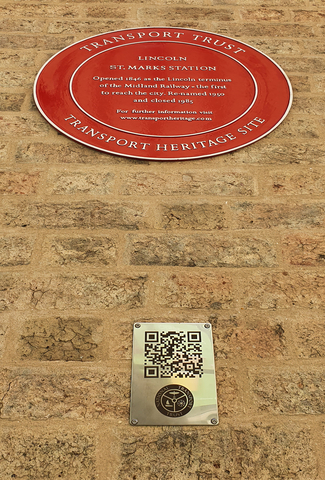
Railways of Lincolnshire.Paul Anderson. Irwell Press 1992
Society for Lincolnshire History & Archaeology Industrial Heritage Guide 2004.
Lost Railways of Lincolnshire. Alan Stennett. Countryside Books. 2007.
Lincolnshire Railway Stations on old postcards. Eric Croft. Reflections of a Bygone Age. 1993.
Lincolnshire’s Lost Railways. Neil Burgess. Stenlake Publishing. 2007.
Britain’s Historic Railway Buildings. Gordon Biddle. Ian Allan. 2003
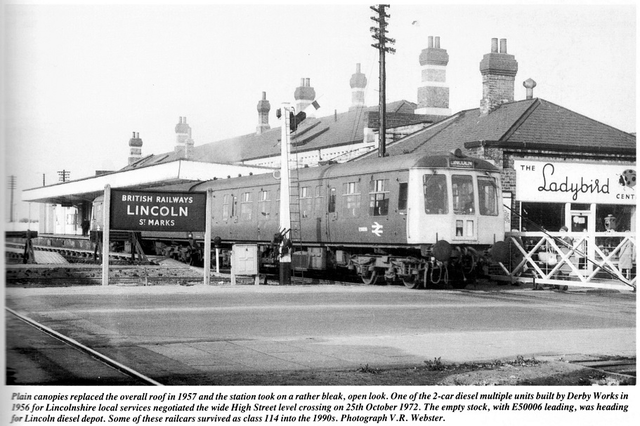
St Marks Shopping, Lincoln Press release:
2 October 2020
St Marks Shopping Centre home to iconic plaque
St Marks Shopping Centre, Lincoln has been granted a prestigious national award in recognition of its significance over 100 years ago.
The award is being made by the National Transport Trust, whose Patron is HRH the Princess Royal, and President is Judy, Lady McAlpine. The Trust is the only national UK charity devoted to the recognition of our heritage across all modes of transport in Britain.
It does this through grants to transport restoration projects and, most especially, by raising the profile of the most important sites of transport heritage through the award and erection of bespoke plaques popularly known as ‘Red Wheels.’ The National Transport Trust’s representative in Lincolnshire, Brian Ward, explained that “whereas ‘Blue Plaques’ are about people, e.g. authors, royalty etc., the ‘Red Wheels’ highlight places of engineering and logistical achievement.”
The first two sites to be recognised in Lincolnshire are the former St. Marks Station – now formerly known as St Marks Shopping Centre - and the White Hart Hotel.
The Midland Railway arrived in the city in 1846 with its line from Nottingham and Newark. The station, re-named St. Marks in 1950, was in use continuously until 1985 when all services were concentrated at Lincoln (Central). Fortunately, the potential of the redundant station’s Grade ll listed frontage was skilfully incorporated into the delightful St Marks Shopping Centre, opened in 1996.
Lady McAlpine added “The National Transport Trust is proud of its role and of its ‘Red Wheel’ programme (now extending to well over 100 plaques across Britain) and which is designed to raise awareness of Britain’s transport heritage and to inspire the next generation. Our first two Lincolnshire awards are classic examples and we look forward to considering other nominations from the County.”
Centre Manager of St Marks Shopping Centre, Valerie Johnson commented “We are absolutely thrilled to be invited and evaluated as a Red Wheel site. Embracing our heritage is extremely important to us and something we often celebrate – last year we hosted our “Full Steam Ahead” event, whilst this year we now have a plaque to celebrate our ‘hidden gem’ of the former St. Marks Station.”